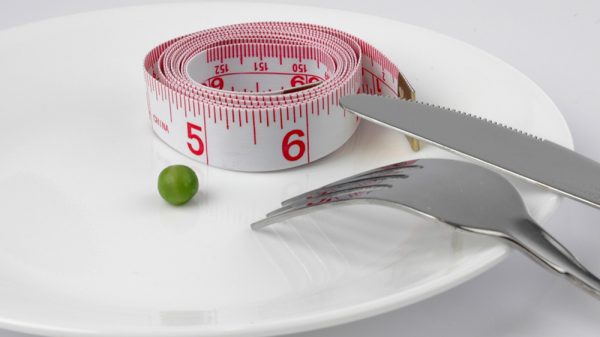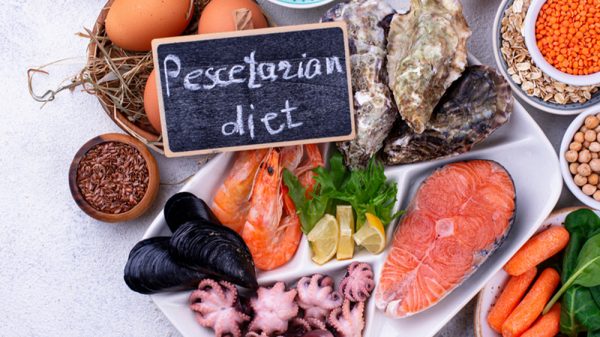It’s safe to say that nearly everyone loves bread. Bread is an appetizer at restaurants, a tool for mopping up extra sauce, a vehicle for sandwiching fillings, and an important aspect of many different cuisines. But is bread bad for you? The nutritional status of bread has been hotly debated for decades, and bread often gets a bad rap for being unhealthy.
Let’s dive into the truth behind bread and determine whether it’s healthy or not.
The Reason Bread Has a Bad Reputation: White Bread
White bread really gives bread, in general, a bad name and is the reason why many people believe that bread makes you fat. Here are all the reasons why white bread is bad for your health.
1. Increases Blood Sugar
This is one of the central reasons why white bread is unhealthy. White bread undergoes an extensive industrial process to convert whole wheat into the product on grocery store shelves that we know as white bread.
The final product is a fluffy, light-colored bread that is high in simple carbohydrates. Though white bread is tasty, the simple carbs such as those found in white bread, white pasta, and white rice are known to spike blood sugar. Biochemically, the body handles both simple carbohydrates and added sugars in the same manner.
When we eat white bread, the digestive system breaks down carbohydrate molecules into smaller glucose molecules. These glucose molecules are then rapidly absorbed into the bloodstream via the stomach and small intestines. As blood sugar levels rise, the pancreas releases insulin, which triggers the uptake of sugar into the cells to use for energy.
Chronically high levels of blood sugar cause metabolic processes to be less efficient when converting sugar into energy. When blood sugar levels are continuously high, insulin function begins to suffer. All of these factors lead to metabolic conditions like insulin resistance, type 2 diabetes, and fatty liver disease.
2. Contains Added Sugar
On top of being made completely of simple carbohydrates, many brands of white bread also contain additional added sugar! Sugar may be added to the bread during the industrial process in order to give the bread a sweeter flavor. Added sugar is the sugar that has been removed from its original sources, such as fruit or sugar cane, and then added into other products like white bread.
White starch plus added sugars is a double whammy for your system, contributing to blood sugar spikes, weight gain, and metabolic conditions like fatty liver disease, type 2 diabetes, and insulin resistance.
3. Contains Very Few Nutrients
White bread contains very few nutrients. White bread is made from processed grains, which have been subjected to an industrial process that removes all nutritional parts of the grain. The outer shell of the grains contains loads of vitamins, minerals, antioxidants, fiber, and protein. However, this part of the grain is removed during the manufacturing process for white bread, leaving only the component that is rich in starch. This refined product is then turned into white bread, which is devoid of all of the natural nutrients present in the original grain.
In some cases, manufacturers attempt to re-introduce nutrients into white bread through a process called fortification. As a result, some white bread contains B vitamins such as folic acid. Otherwise, the nutrient content of white bread tends to be generally very low.
4. Causes Inflammation
Eating white bread regularly increases blood sugar levels and causes constant blood sugar spikes. Having chronically high levels of blood sugar means that excess sugar is being carried throughout your body and into tissues and organs. Constant exposure to high levels of sugar can irritate cells and tissues, and over time jeopardize healthy functioning.
On top of that, high blood sugar levels may also cause inflammation within the blood vessels themselves. Inflammation within blood vessels may eventually cause scarring that impedes blood vessels’ ability to dilate and constrict properly, which can contribute to high blood pressure.
5. Isn’t Filling
White bread may be really tasty, but it isn’t filling. White bread is light and fluffy, and it’s easy to eat several slices or more without feeling stuffed. White bread doesn’t tend to be filling because it is a simple carbohydrate. The digestive system breaks down white bread quickly, leaving us wanting more.
6. Causes Weight Gain
The empty calories in bread from simple carbs, high amounts of added sugar, and lack of filling effect can cause white bread to pack on the pounds. A slice of white bread can range from 50-100 calories, depending on the size of the slice. However, these calories can quickly add up. Imagine you have a piece of toast with breakfast, a sandwich for lunch, and a slice of bread with soup for dinner. These four slices of bread offer an extra 200-400 calories per day! Plus, the excess sugar and refined grains interfere with effective metabolic functioning and result in inflammation.
How to Choose Healthy Bread
When you go to the supermarket, the aisle of bread products can be positively overwhelming. However, choosing the right bread is a positive addition to your diet and offers numerous health benefits. Here we give you a guide for choosing bread that is a part of a healthy, balanced diet.
1. Look for Darker-Colored Bread
A darker-colored bread is a clue that the whole grain has been used in the production of the bread. Whole-grain breads and multigrain breads tend to have a darker color. Steer clear of pale-colored, white bread, which signifies that the bread was prepared with only the starchy component of the grain.
2. Steer Clear of Preservatives
Many manufactured bread brands contain a number of preservatives to prevent mold and maintain color, texture, and taste. If the ingredients label contains words that are difficult to pronounce, such as calcium propionate and diglycerides, it’s best to leave that loaf of bread on the shelf.
3. Make Sure Protein Content Is High
The protein content of whole-grain bread should be relatively high. Look for bread that contains at least 3 grams of protein per slice. Bread with a higher protein content will likely also contain nuts and seeds.
4. Make Sure the Fiber Content Is High
Fiber is a critical health-promoting nutrient in whole-grain bread. Look for bread that contains at least 3-5 grams per slice, depending on the size of the slice. High fiber content is important because it promotes a balanced gut microbiome and encourages the growth of good gut bacteria. Eating lots of fiber also protects heart health and encourages lower levels of cholesterol and lower blood pressure. Whole grain is an excellent source of fiber, along with nuts and seeds, which are often incorporated into bread.
Having plenty of dietary fiber in your bread may also help with weight loss. Getting an ample amount of fiber in your diet can help you feel fuller, faster so that you’re not overeating and intaking more calories than you need.
5. Check the Nutrition Facts
A nutrition label is a useful tool that helps you determine the nutritional value of the bread you are buying. The nutrition facts give you the breakdown of macronutrients in each serving of bread. Plus, in addition to carbohydrates, fat, and protein, the nutrition facts also show the fiber, sodium, vitamin, and mineral content of the bread.
6. Check the Ingredients List
Do not trust marketing buzzwords like “whole wheat,” “multi-grain,” or even “whole-grain” that might be plastered to the front of the packaging. Many whole-wheat bread loaves sold at the grocery store are in fact not whole wheat. Examine the ingredients list to ensure that the components used to prepare the bread are actually healthy.
The ingredients label will describe exactly what ingredients are used to make the bread. Be wary of words such as “enriched” and “bleached,” which usually signify that the flour has been heavily processed and then fortified with added nutrients.
Your alarm bells should also go off if you see any ingredients with the words “corn syrup” or “fructose.” Any term with the word “syrup” indicates the addition of sugar, even if it’s seemingly healthy, like brown rice syrup. All of these terms indicate that sugar has been added to the bread, and it’s best to check out other brands.
It’s also a good idea to pay special attention to the first ingredient on the list. Normally, ingredients are listed from the most abundant ingredient to the least abundant ingredient. Make sure that the first ingredient is a whole grain, such as wheat, buckwheat, millet, and quinoa. “Sprouted” is an even better term that indicates that the grain used is even higher in fiber and protein.
7. Choose Gluten-Free Bread, If You Have a Gluten Sensitivity
Gluten is a protein that’s present in certain grains such as wheat, spelt, and barley. Most people have absolutely no problem eating and processing gluten, and wheat proteins serve as a healthy part of a balanced diet.
However, some individuals suffer from a condition called celiac disease. Celiac disease is a condition that causes a significant immune system reaction when an individual consumes products containing gluten. Symptoms are unpleasant and include bloating, nausea, diarrhea, and chronic gas. Other individuals have a non-celiac gluten sensitivity, which can cause them to feel fatigued or lethargic in the aftermath of consuming gluten.
If you are following a gluten-free diet as a result of celiac disease or a non-celiac gluten sensitivity, it’s imperative to choose gluten-free bread to protect your health.
Other Components of a Healthy Diet
Of course, whole grain bread alone doesn’t make a healthy diet. Instead, whole grain bread is extremely healthy in the larger context of a balanced, varied diet. Eating a variety of other whole grains, fresh produce, and high-quality protein helps ensure that you are protecting your health.
1. Fruits and Veggies
Fruits and vegetables are a crucial source of antioxidants, fiber, vitamins, and minerals in a balanced diet. The antioxidants in fruits and vegetables include compounds like vitamin C, polyphenols, flavonoids, and carotenoids. These antioxidants compounds target harmful molecules called free radicals that inflict damage on healthy tissues and cause oxidative stress. Increasing your intake of fruits and veggies helps the body neutralize and get rid of free radicals, protecting all organ systems from oxidative stress.
Eating an abundance of fresh produce protects the body from oxidative damage, while also helping the body function as smoothly as possible. Eating more fruits and vegetables is associated with healthier metabolic function and protection against heart disease. To increase your intake of fresh produce, reach for foods like broccoli, kale, spinach, sweet potato, tomatoes, cabbage, blueberries, raspberries, and oranges.
2. High-Quality Protein
Getting plenty of protein on a daily basis is a critical part of a healthy diet. Protein supplies essential amino acids that the human body uses for a vast array of biological processes. There are nine essential amino acids that we require in optimal ratios: leucine, isoleucine, valine, histidine, lysine, methionine, threonine, phenylalanine, and tryptophan. Whole grains are a source of certain essential amino acids such as tryptophan and phenylalanine, though they are liking others such as lysine.
In order to get a complete ratio of essential amino acids, it’s important to eat healthy animal-based products like chicken breast, cheese, yogurt, and fish. For the healthiest protein options, make sure that you choose low-fat meat and dairy to avoid saturated fat.
For individuals following a plant-based diet, eating a variety of plant-based food sources on a daily basis like whole grains, nuts, seeds, beans, and soy products can offer complete ratios of essential amino acids. Though to avoid needing to plan out meals, essential amino acid supplements can fill any gaps while offering convenience.
3. Healthy Fats
While some whole-grain breads may include healthy fat, it’s important to increase your consumption of other healthy fats in your diet.
Healthy monounsaturated and polyunsaturated fats are important for lowering systemic inflammation in the body. Omega-3 fatty acids – a type of polyunsaturated fat – is particularly helpful for fighting against inflammation, cardiovascular disease, and metabolic conditions like type 2 diabetes and fatty liver disease.
Eicosapentaenoic acid (EPA) and docosahexaenoic acid (DHA) are the omega-3 fatty acids that are found in oily fish such as salmon, sardines, and mackerel. Plant-based omega-3 fatty acids are found in the form of alpha-linolenic acid (ALA) in foods like walnuts, chia seeds, flaxseeds, and pecans.
Other Things to Keep in Mind
The difference between white bread vs whole-grain bread holds true across all grain products. When picking out breakfast cereals, granola, and other grain-based products, check the ingredients list to ensure that the product is prepared with whole-grain flours and is low in sugar. When baking your own bread and other baked goods, always aim to use whole-wheat flour and other whole-grain flour.
Don’t worry about the carbohydrate content of bread. How many carbs are in a slice of bread? A slice of bread may contain between 20-30 grams of carbs. However, as long as there is an ample amount of protein and fiber, then it’s not a cause for concern. You may need to consider the carbohydrate content only if you’re on a special low-carb diet.
You may still have questions and concerns about what bread to choose or how whole-grain bread can be a healthy part of a diet that fits your specific needs. Your doctor and a registered dietitian or nutritionist can be excellent resources for determining how to exactly tailor your dietary regimen to fit your needs.
Final Words: Is Bread Bad for You?
So, what is the verdict? Is bread healthy? Saying that bread is either healthy or unhealthy would be a drastic overgeneralization. The truth is, some bread is bad for you and some bread is very healthy. However, you must be wary of harmful ingredients when scanning the selection of bread at the grocery store. Go for bread that is high in fiber, darker in color, and rich in protein. Avoid very light-colored bread, which usually means that the bread has been highly processed and lacks health-promoting micronutrients and macronutrients. Always scan the nutrition label and ingredients list to ensure that only wholesome whole grains, nuts, and seeds are used in the production of the bread.
























